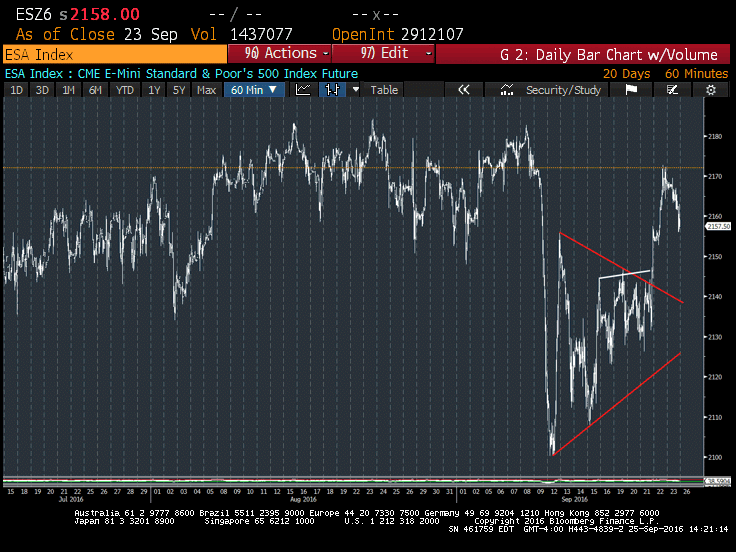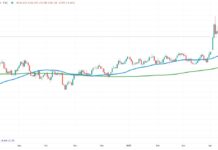The S&P 500’s ability to press up above 2146 after the Bank of Japan and FOMC meetings last week was constructive. For now, the price action lies in “No-man’s Land” as investors begin a week of seasonal bearishness as Q3 comes to an end. Minor pullbacks in the S&P 500 (INDEXSP:.INX) are possible this week, but the broader stock market trend is positive and weakness should prove buyable in my opinion.
Despite the sideways action, there’s a lot going on under the surface from a macro technical perspective.
With one week left in the month and 3rd quarter, September has shaped up to be far more positive than most gave it credit for. While the major stock market averages look to finish largely unchanged to slightly negative for the month (SPX -0.29%), the NASDAQ Composite (INDEXNASDAQ:.IXIC) has certainly surprised to the upside, with returns just shy of 2% (1.77% through 9/23). The S&P 500 return is largely in-line with most Election year Septembers.
While equities remain in a seasonally weak time, it’s looking increasingly likely that any market pullback should take place after the election. Furthermore, given very bullish seasonality trends for the months of November and December, larger pullbacks very well could be pushed out into early 2017.
My outlook for stocks is bullish into year-end. Specifically, these 5 developments look important & positive for US markets in the weeks ahead:
1) NYSE Advance/Decline average for “All stocks” is back at new All-time High territory. Most remember this key market breadth gauge jumping back to new all-time highs back in late March/April of this year, and advance up above last November/December highs before indices made their move. It’s likely that this will happen yet again, given the uptick in breadth and momentum on a short-term basis, which is now resulting in positive divergence for breadth ahead of price. While many rightly remember negative divergence in breadth to be a negative for US markets which can precede downturns, the flip side of this is also true, which is what is happening now in the US.
2) The NASDAQ Composite and NDX have jumped back to new all-time high territory. This is a definite positive for technology and Biotech stocks. While the S&P 500 and Dow Jones Industrial Average have not yet made this move, it’s likely that both will join suit in the weeks ahead.
3) Sentiment has pulled back quite a bit from bullish levels seen in mid-July. Much of this has to do with recent uncertainty regarding FOMC’s rate hike schedule along with the ongoing tight Election probabilities, where both candidates remain highly unpopular. Typical election uncertainty can often serve as a negative sentiment overhang that causes equities to do far better than expected during September/October, and this also seems to be the case thus far heading into end of Q3. AAII Bull/bear difference remains negative, while Investors Intelligence polls were cut in half from spreads nearing 40 back in early August.
4) Russell 2000 vs S&P 500 looks to have broken out this past week. The move in in the Russell 2000 vs S&P 500 ratio back over key trend line resistance should help small-cap stocks. This comes at a time when they’ve lagged substantially over the last couple years. This recent surge is a definite technical positive for the short run.
5) Transportation stocks have also made some headway of late in jumping back above a key trendline vs the entire Industrials group, which bodes well for Transports outperformance. DJ TRAN Avg itself will require a move back over 8150 to think it’s “in the clear” to make a larger advance and recoup more of its decline since late 2014. For now, recent stabilization near this trendline this year followed by last week’s strong close bodes well for some upcoming follow-through.
Specifically, the Transports are the area of focus this week, given some recent surge in the Airlines and Freight delivery stocks like Federal Express (FDX) and DJ TRAN remains very close to a larger breakout move in absolute terms, which would help to bolster the Industrials group, and cast aside a much scrutinized “Headwind” for the market, given the importance of participation in the Transports.
S&P 500 – Short-Term/ Intermediate-Term Technical Market Thoughts

Short-term Thoughts (3-5 days) : Neutral to Mildly Bearish- Despite all these positives mentioned above, S&P 500 lies at a tough area heading into the final week of the month and Quarter. Prices could easily “back and fill” before lifting up to new highs, as prices jumped about 1.5% post Fed, the best two day gain since July, and hourly charts reflected overbought conditions. Some additional upside progress is necessary before thinking prices can move higher right away, and for now that area lies at 2183, which was achieved in early September. On the downside, pullbacks to 2140 down to 2136 could happen this week with little or no net negative effect on the indices, and would be a buying opportunity. For now, prices lie at a difficult spot to have much conviction.
Intermediate-term Thoughts (2-3 months): Bullish- Structurally speaking, the S&P 500 has held up fairly resiliently, and while it was right to expect a bit of pullback on a 2-3 month basis a couple months ago, the overall extent of the downdraft thus far has proven minimal, while the broader pattern for S&P 500, NASDAQ, and Dow Jones remain bullish. Momentum has turned back to positive on monthly charts and suggests that dips in the weeks ahead should be buying opportunities unless far greater weakness unfolds. Given that 3 months puts the S&P 500 into mid-December, seasonally speaking, we’re losing our time for any real bearish call by the end of October for 2016. While the election is a factor for this year, it’s probably unlikely that a major selloff happens from November into end of year given the current structure while bullish seasonal factors take over. Much of the weakness possibilities therefore likely will be pushed into 2017 when a new President takes control. The fact that the S&P 500 and other indices have pushed higher while monthly momentum remains well shy of former highs made in 2014/2015 could be a bigger deal in terms of highlighting how this market has slowed. However, for now, no real evidence of broader price weakness is apparent in the indices, so a greater amount of proof will be necessary given that seasonally bearish periods for an intermediate-term correction are rapidly coming to an end in the next 4-6 weeks.
Thanks for reading.
Get more trading insights and market analysis over on my blog Newton Advisor. Thanks for reading.
Twitter: @MarkNewtonCMT
Any opinions expressed herein are solely those of the author, and do not in any way represent the views or opinions of any other person or entity.








